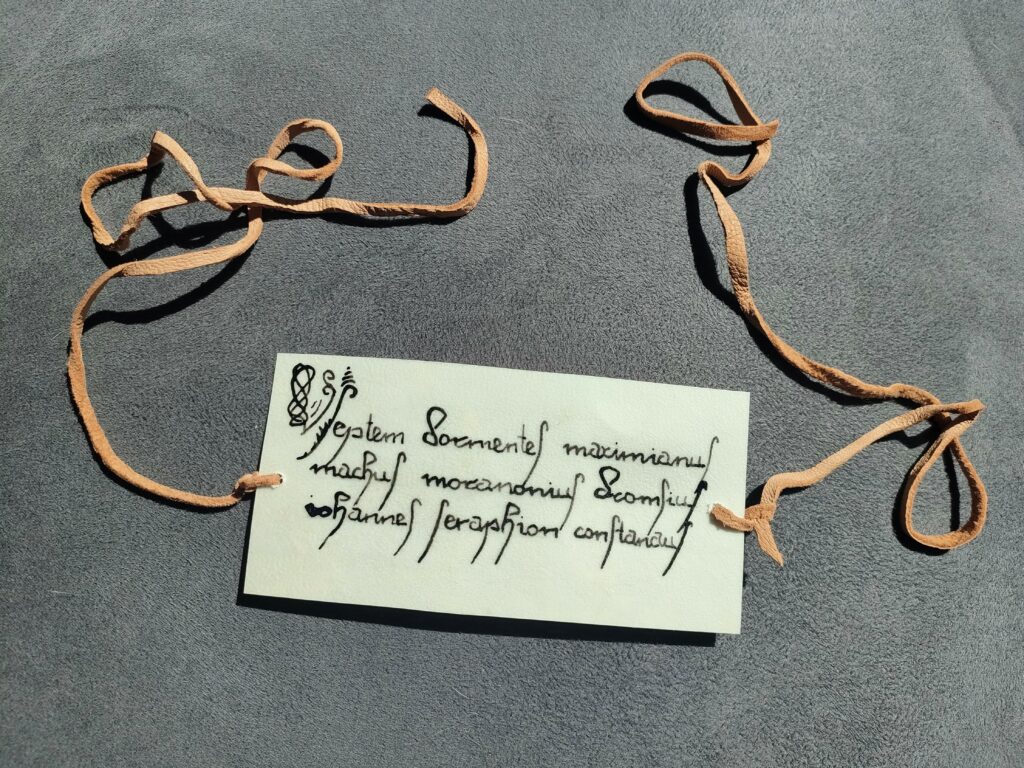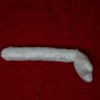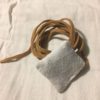Abra Cadabra – A spell for a good birth
Today I would like to show you a new piece from my collection on the topic of women in the middle ages. I recently worked on a display table on the topic of women for an event. I already had a lot of pieces from my prior work, but there is loads of more pieces to explore!
If you have contact with modern neopagan circles, you might get the feeling that christian people in the middle ages completely refuted magical applications, but the truth is way more complicated, because magic – as we understand it today -, medieval medicine, medieval science and christian belief can’t even clearly be separated.
The source for this piece is a gynecological compendium from the 15th century, the “Römisches Frauenbüchlein” (you can find a german paper with the inclusion of the german original texts here, attention, the download of the PDF starts immediately). It is a medical collection with recipes and applications from in part earlier collections or contemporary ideas. These compendiums are often copied over and over and the recipes are always reduced or supplemented, as is also done with collections like the “Trotula” or the “Secretis Mulierum“.
One application in this collection is a spell for a good birth. The author writes to put the spell on a letter and bind it around a woman’s belly during birth and take it off immediately after birth.
“Wenne daz weib arbeit czu einen chinde daz sie senfte geber
Schreib die wort an einen briff vnd gurte in ir vmb den
bauch Septem dormentes maximianus machus moranonuis
dromsius iohannes seraphion constanaus vnd wenne
sie gebiert So heise ez ir balde ab tun ader es fure alles
von ir daz sie yn ir hete yndert bey ir hete ader yn ir”
(Recipe Nr. 36)
“When the woman gives birth to a child, for her to have a gentle birth,
write these words onto a letter and bind it around her
belly Septem dormentes maximianus machus moranonuis
dromsius iohannes seraphion constanaus and when
she has given birth, take it of soon or she looses all
that she has in her and on her.”
The spell is btw. latin gibberish and doesn’t mean anything.
By the way, this piece is related to so called “birth girdles“, girdles made of parchment to help with birth complications. It might even have been instructing how to make one of those girdles, my interpretation is by no means the end-all solution on how to set this recipe into practice. This book here is ready for preorder on this topic and I hope to be able to get it next year.
Now, I am really no skilled caligrapher, I practiced writing high gothic bastarda/notula/kursive (and am still not sure what the exact differences are, I just tried to copy original pieces from my period and region). I realise the result isn’t as great as it could be and ask for your kind judgement on my writing skills.
I used goat parchment, feather and iron gallus ink and leather ribbons to demonstrate the use.
I think, this piece demonstrates wonderfully illustrates this aspect of women’s lives in that time that was influenced by the cycles of pregnancy and birth and the often helpless feeling of all involved during birth complications in a time without modern medical resources and high mortality rates during child birth.
Related Posts
The following posts might interest you as well:









